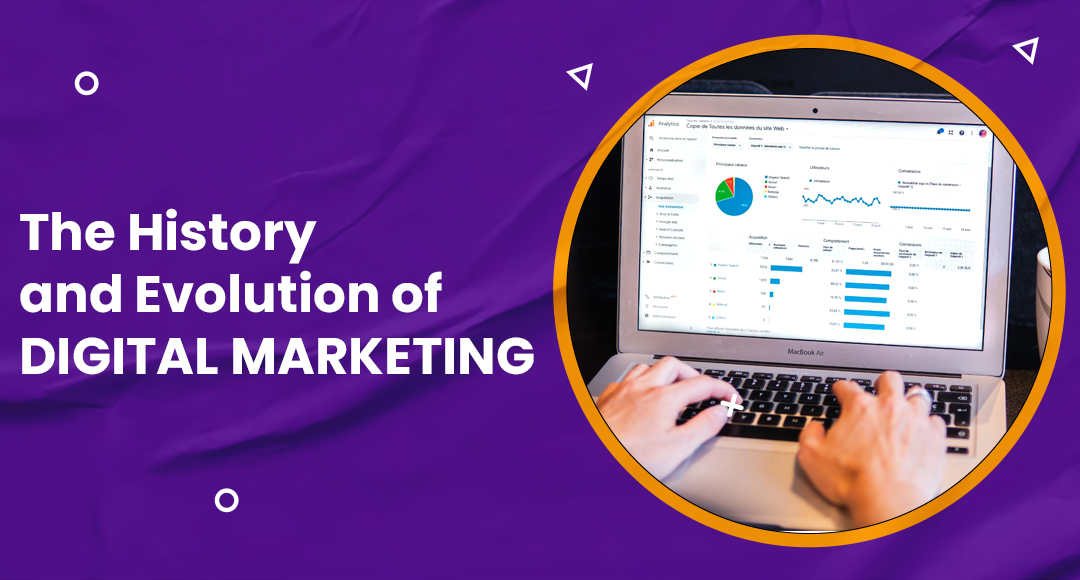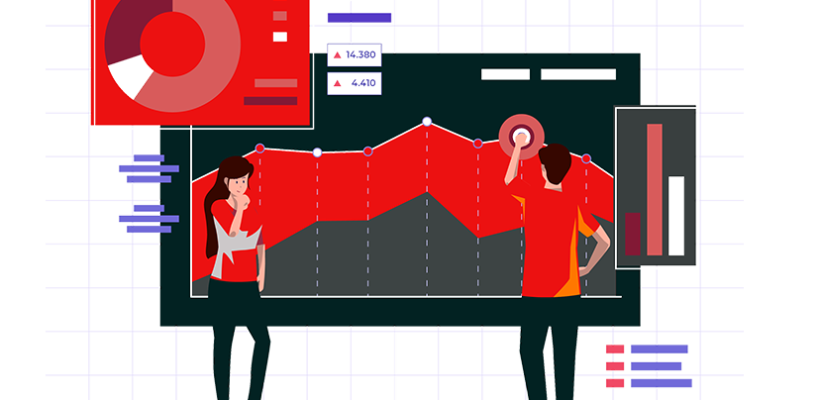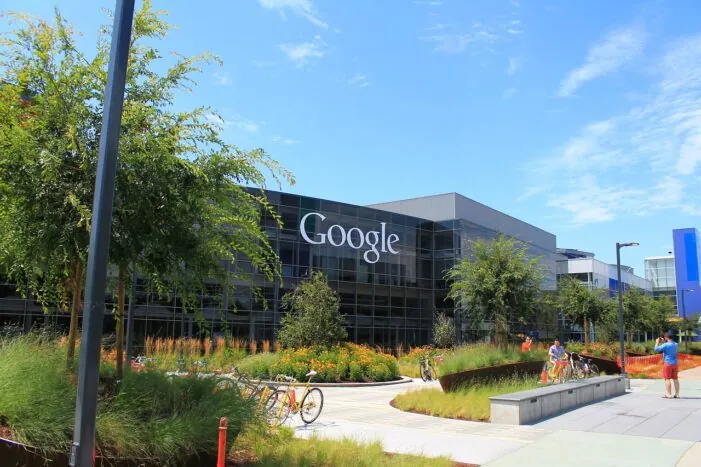The Development of Online Advertising
The fact that you are here, reading this with complete ease, is proof that evolution is at work. Simply said, it is the means by which one can realize his or her full potential and enjoy a higher standard of living. Although evolution covers a lot of ground, we will be focusing on the marketing realm here. Three major technical developments—the proliferation of smartphones, big data, and the Internet—have accelerated the development of digital marketing.
Nearly 4.66 billion people use the internet every day, and 3.8 billion of those people use smartphones. In 2020, each individual generated 1.7 MB of data every second. On a daily basis, we generate 2.5 quintillion bytes of data, and this figure is only going up.
In recent years, digital marketing in India has grown substantially. The goal and core principles of digital marketing have not changed much over the past few decades, but the channels and approaches have evolved substantially. We can thank the origins of digital marketing for this expansion.
The Evolution of Online Advertising
From its origins in the 1990s, when the term “digital marketing” was first coined, the history of digital marketing is as interesting as it gets. Although Tim Berners-Lee and his team began working on the World Wide Web in 1991, it wasn’t until 1994, with the debut of Netscape Navigator, that the project began to receive widespread attention. The subsequent surge in internet users accelerated the growth from 16 million to 70 million. Online marketplaces like Amazon (1994) and eBay (1995) and search engines like Yahoo! (1994) and Google (1997) ushered in the era of digital marketing.
Paper, film, and other physical data storage mediums were supplanted by big data. A flurry of activity began to surround email marketing. To better serve their users, search engines began compiling a database of websites from which they could retrieve desired information, goods, and services. Social media sites such as LinkedIn(2002), Myspace(2003), Facebook (2004), and Twitter (2007) encouraged users to divulge more private information about themselves. Brands began developing a plethora of digital strategies to attract consumers after realizing the significance of digital marketing.
Years later, we’re still here, using data analysis to develop effective strategies based on trends and patterns in human behavior. The advantages of digital marketing are becoming apparent to both marketers and consumers nowadays. So, what exactly is the modernized version made of?
Digital Marketing: 5 Main Categories
1. Marketing on Social Media:
Every day, people spend around two hours and twenty-four minutes glued to various social media sites. We are fortunate to live in a time when more people prefer to meet virtually than in person. Now more than ever, companies are catching on to digital lingo and harnessing its power for social media marketing. More leads and conversions are possible as a result of a positive brand image, which can be achieved through customer relationship management, virtual brand experiences, and engaging content.
2: Email Advertising:
Worldwide, 4.03 billion people use email. Email is the preferred method of distribution for 87% of B2B marketers. Email marketing is still very much a part of modern marketing strategies, as 79% of business-to-consumer marketers use it to disseminate new articles or blog posts. Why? It’s an inexpensive strategy with a high return on investment (ROI) that facilitates easy target audience reach and connection building through personalized messaging.
3. Marketing through content:
Content is still king in the marketing kingdom. Almost all (96%) of the top content marketers credit content marketing with assisting them in gaining their audience’s trust and credibility. Consumers are more likely to engage with content that speaks directly to their interests or issues. People are more likely to return for future interactions once a personal connection has been formed. Your natural visibility in SERPs is also enhanced.
4. Optimization for Search Engines:
An essential aspect of any digital marketing strategy should be search engine optimization (SEO) since 93% of all online experiences start with a search engine. Search engine optimization, often known as SEO, is a strategy to improve your website’s visibility in search engine results pages (SERPs) and attract more high-quality organic visitors. Furthermore, it has the potential to establish your brand as a reliable online resource for accurate information.
5. Pay-per-click management:
Pay-per-click advertising has helped their company, according to 79% of marketers. Ads on PPC, one of the most popular tools, cost advertisers money every time a user interacts with their ad. Just as the name implies, advertisers only pay when people click on their ads.
The nicest thing is that you have complete control over the amount you spend. You can narrow your target market even further by demographic variables such as geography, language, gender, occupation, and more.
Work With Us To Create An Optimal Digital Marketing Plan For Your Company
Digital marketing is now essential for brands in today’s Internet-driven world. Get in touch with BrightBrain, a top digital marketing agency that can adapt to your business’s changing needs, if you’re a brand that wants to leave an indelible mark on the internet and your customers’ hearts.
We specialize in creating digital solutions for branding and increased sales efficiency as a digital marketing and advertising agency. Online branding, web development, search engine optimization, social media marketing, and digital advertising campaigns are all within our area of expertise. By collaborating with Google’s internal team, our Google Partnership creates a one-of-a-kind opportunity to benefit both our team and our clients.
FAQ
1. Who started the online advertising movement?
In the 1990s, the phrase “digital marketing” was initially used. Although Tim Berners-Lee and his team began working on the World Wide Web in 1991, it wasn’t until 1994, with the debut of Netscape Navigator, that the project began to receive widespread attention. The subsequent surge in internet users accelerated the growth from 16 million to 70 million. Online marketplaces like Amazon (1994) and eBay (1995) and search engines like Yahoo! (1994) and Google (1997) ushered in the era of digital marketing.
2. Why is digital marketing a good thing?
With digital advertising, you can reach a large or specific audience through a variety of channels, all while saving money, seeing results instantly, and adjusting your campaigns based on audience reaction. Traditional marketing is seeing a decline in its share of the market as digital marketing continues to soar. This is due to the following reasons:
- Creates an equal opportunity environment for large and small businesses
- Enhances the trustworthiness and genuineness of the brand.
- Makes it possible for you to keep a steady flow of leads.
- It enables interaction with clients at every step of the purchasing process.
- It saves money.
- Gets you in front of potential clients quickly.
- Lets you base your decisions on data.
- Find ways to improve conversion rates.
3. How does marketing make use of AI?
There has been, and will be, a marked increase in the prominence of artificial intelligence (AI) as the engine that propels a wide range of services in recent years, including but not limited to e-commerce, content creation, product recommendations, etc.
Digital marketers can benefit from AI in a number of ways, including reduced staffing costs, easier consumer behavior analysis, and better customer understanding through the use of data gleaned from social media platforms.
Ads that use programmatic buying and AI work hand in hand. Put another way, many will begin to question AI’s supremacy in 2021. To automate the ad buying process and more precisely target a desired audience group, programmatic ads use AI. Increased conversion rates and decreased acquisition costs are clear indicators of how effective this conversion has been.
4. How will digital marketing evolve in the future?
With its ever-improving techniques, digital marketing has expanded its reach to include a wide range of industries and countries around the world. If you want to be at the head of the pack in this modern internet age, you need to be a tech whiz. To guarantee digital marketing’s continued success, here are the ten most important trends:
- one. Posts that can be purchased
- Plans that are based on subscriptions
Computer Programs
Advertising via conversation
Using influencers to market
Targeted Advertising
Virtual assistants and voice searches
Insightful and enhanced analytics
SEO for structured data
Promoting through video
Using A/B exams
Tales from Social Media
5. Which three categories of digital media are there?
Among digital media, the three most common kinds are:
First, there’s earned media, which includes all the online “word of mouth” that promotes a business.
2. “Owned Media” refers to the channels that the brand owns and uses to promote its products and services. This includes websites, blogs, YouTube channels, social media pages, and more.
Thirdly, paid media is by far the most common. Paying to reach your audiences is a part of it. The most common forms of paid media include social media ads, search engine marketing (SEM), and pay-per-click (PPC) ads.





